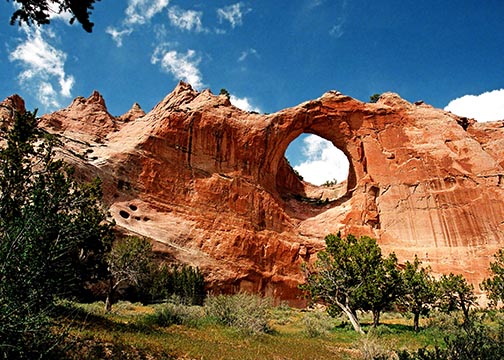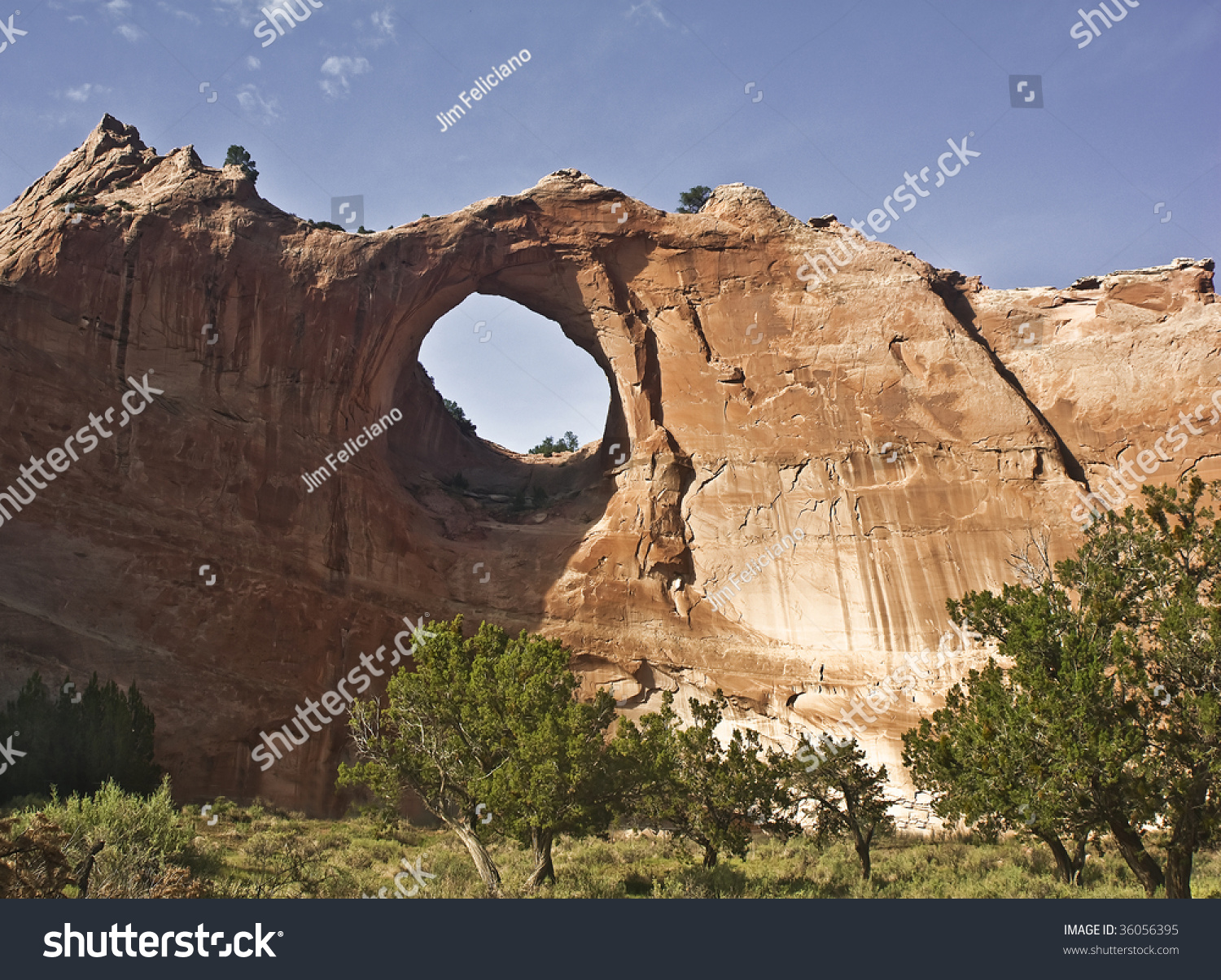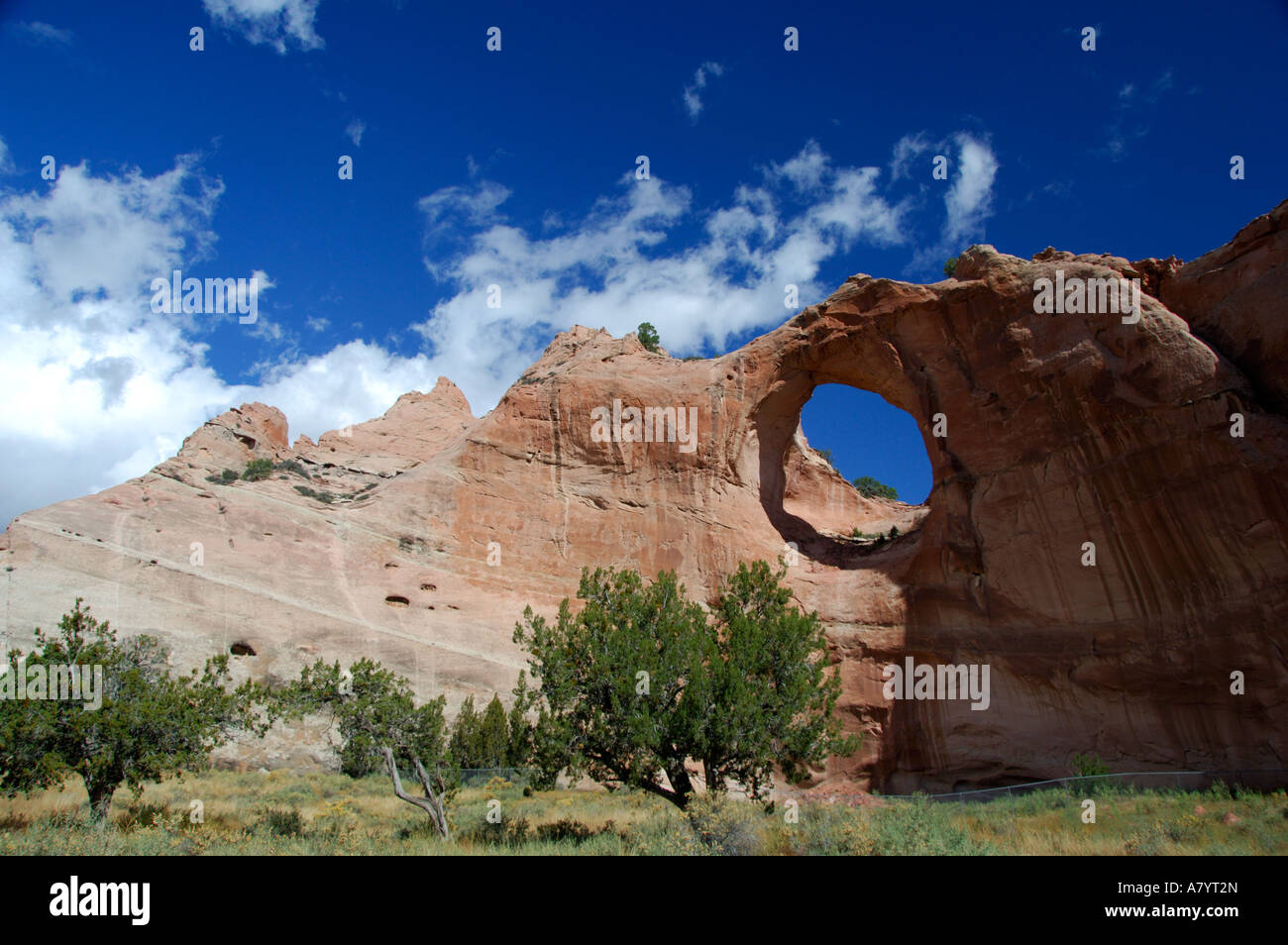
Window Rock: A Journey to the Heart of the Navajo Nation
Nestled amidst the sweeping red rock landscapes of northeastern Arizona, Window Rock (Tségháhoodzání in Navajo) stands not merely as a scenic outpost but as the vibrant, beating heart of the Navajo Nation. As the tribal capital, it is a place where ancient traditions seamlessly blend with modern governance, where the majesty of nature frames profound cultural narratives. For those seeking an authentic glimpse into Native American life, history, and sovereignty, Window Rock offers an unparalleled journey into the soul of Diné Bikeyah, the Navajo homeland.
The Iconic Window Rock Formation: Nature’s Grand Arch
The very name of the capital is derived from its most striking natural feature: the Window Rock formation itself. This magnificent sandstone arch, known to the Navajo as Tségháhoodzání, meaning "the rock with a hole through it," or "perforated rock," stands as a powerful symbol of the nation. It is not just a geological wonder but a sacred site, deeply embedded in Navajo cosmology and oral traditions. The arch frames the sky, offering a unique perspective on the vastness of the cosmos, much as it offers a window into the enduring spirit of the Navajo people.
Visitors can easily access the formation, often taking time to photograph its impressive scale and the intricate patterns carved by millennia of wind and water. Its proximity to the Navajo Nation Zoological and Botanical Park makes it a convenient first stop, setting the tone for a visit steeped in natural beauty and cultural significance. The arch reminds all who behold it of the profound connection between the Diné and their ancestral lands.
Seat of Sovereignty: The Navajo Nation Council Chambers

Just a short distance from the natural arch, one encounters the architectural embodiment of Navajo self-governance: the Navajo Nation Council Chambers. This historic building, constructed in 1934 by the Civilian Conservation Corps (CCC) and Navajo laborers, is a remarkable example of traditional design melded with functional purpose. Its unique octagonal shape mimics the traditional Navajo hogan, a sacred dwelling, symbolizing the strength and unity of the people.
Inside, the chambers are adorned with vibrant murals depicting Navajo history, culture, and creation stories, offering a visual narrative of the nation’s journey. This is where the 24 delegates of the Navajo Nation Council convene, making critical decisions that impact over 300,000 tribal members. Standing before this building, one feels the weight of history and the vibrant pulse of a sovereign nation in action. It’s a powerful testament to the resilience and political determination of the Navajo people, who, against immense odds, have maintained and strengthened their self-governance.
Preserving a Legacy: The Navajo Nation Museum
To truly understand the depth of Navajo culture, a visit to the Navajo Nation Museum is indispensable. This modern, expansive facility is a treasure trove of Diné history, art, and language. Its mission is clear: to collect, preserve, and interpret the material culture of the Navajo people. The museum’s exhibits span centuries, from ancient archaeological finds to contemporary Navajo art, providing a comprehensive overview of the nation’s rich heritage.
Visitors can explore galleries showcasing traditional Navajo weaving, silversmithing, pottery, and basketry, often considered among the finest indigenous arts in North America. Interactive displays delve into the complexities of the Navajo language (Diné Bizaad), a language that played a crucial role in world history. Historical photographs and documents illuminate significant moments, including the Long Walk of 1864 and the ongoing struggle for self-determination. The museum also features a research library, archives, and a gift shop offering authentic Navajo crafts, making it a central hub for cultural immersion and education. It’s a place where the past is not merely remembered but actively celebrated and kept alive for future generations.
Heroes Remembered: The Navajo Code Talkers Memorial
A poignant and deeply moving site in Window Rock is the Navajo Code Talkers Memorial. Located adjacent to the Council Chambers, this memorial honors the extraordinary contributions of the Navajo Marines who used their native language to create an unbreakable code during World War II. Their service was pivotal in securing victory in the Pacific Theater, yet their story remained classified for decades.
The memorial features a striking bronze sculpture of a Code Talker, surrounded by interpretive plaques that recount their incredible story. Visitors learn about the ingenuity, bravery, and patriotism of these men whose language, once suppressed by assimilation policies, became a vital tool for national security. "Without the Navajos, the Marines would never have taken Iwo Jima," famously declared Major Howard Connor. The memorial serves as a powerful reminder of their sacrifice and the profound impact of indigenous cultures on American history. It is a place of solemn reflection and immense pride for the Navajo people, ensuring that the legacy of these unsung heroes is never forgotten.
A Sanctuary for Native Wildlife: Navajo Nation Zoological and Botanical Park

Unique among zoos, the Navajo Nation Zoological and Botanical Park holds the distinction of being the only tribally owned zoo in the United States. Its focus is exclusively on native species of the Navajo Nation and the surrounding Four Corners region, making it a vital center for conservation, education, and cultural preservation.
The zoo provides a safe haven for animals that are injured, orphaned, or non-releasable, offering them a second chance while educating the public about the diverse ecosystems of Diné Bikeyah. Visitors can observe majestic animals such as bears, wolves, mountain lions, eagles, and coyotes – creatures that hold deep spiritual significance in Navajo culture. The botanical section showcases native plants, many of which are used in traditional Navajo medicine and ceremonies. It’s an opportunity to connect with the natural world through a distinctly Navajo lens, understanding the interconnectedness of all living things within their traditional lands.
Honoring All Warriors: Veterans Memorial Park
Beyond the Code Talkers, the Navajo Nation has a long and proud tradition of military service. The Veterans Memorial Park in Window Rock stands as a tribute to all Navajo men and women who have served in the United States Armed Forces, from World War I to contemporary conflicts. This beautifully maintained park provides a serene space for reflection and remembrance.
The park features monuments, plaques, and flags representing various branches of service, often inscribed with the names of Navajo veterans. It underscores the unwavering patriotism and commitment of the Navajo people to defending their homeland and the nation at large. For a nation that has endured so much, the dedication to service and sacrifice is a profound aspect of their identity, and this park serves as a powerful testament to that enduring spirit.
Cultural Extravaganza: The Navajo Nation Fairgrounds
Window Rock truly comes alive during its annual events, particularly the Navajo Nation Fair. Held every September, it is proudly proclaimed as the "Largest Native American Fair in North America," drawing tens of thousands of visitors from across the country and beyond. The fairgrounds become a vibrant spectacle of culture, competition, and community.
The fair features traditional Navajo rodeos, captivating pow-wows with intertribal dancing and drumming, livestock shows, agricultural exhibits, and a parade showcasing Navajo artistry and traditions. Food vendors offer authentic Navajo cuisine, from savory mutton stew and famous fry bread to Navajo tacos. Beyond the fair, the grounds host numerous other events throughout the year, including smaller rodeos, concerts, and cultural gatherings, all contributing to the dynamic cultural landscape of Window Rock.
Immersing in Diné Culture: Art, Food, and Community
Beyond the specific landmarks, Window Rock offers countless opportunities for cultural immersion. Local artisans often display and sell their exquisite crafts, from hand-woven rugs and intricate silver and turquoise jewelry to pottery and carvings. Engaging with these artists provides not only a chance to acquire unique, authentic pieces but also to learn about the stories and traditions embedded within each creation.
Dining in Window Rock is an experience in itself. Sampling traditional Navajo dishes like blue corn mush, kneel-down bread, or a hearty bowl of posole offers a taste of the land and its culinary heritage. Local trading posts and markets provide insights into daily life and commerce within the nation, often serving as gathering places where visitors can respectfully observe and engage with community members.
Conclusion: A Gateway to Understanding
Window Rock, Arizona, is far more than just a capital city; it is a living, breathing testament to the resilience, richness, and enduring spirit of the Navajo Nation. From the sacred natural arch that gave it its name to the hallowed halls of its government, the informative exhibits of its museum, and the poignant memorials to its heroes, every corner of Window Rock offers a profound insight into Diné culture and sovereignty. It is a place where history is palpable, traditions are vibrant, and the future is actively being shaped. A visit here is not just a sightseeing trip; it is an educational and deeply moving journey to the very heart of a proud and self-determined people.


